A few weeks ago, we had the pleasure of having a friend visit from lovely Washington, DC. When I asked Blair what was on her must-see list, she said “coffee shops, vintages stores, and pinot noir.” This is kind of like planning a trip to DC and saying your must-see list includes Starbucks, men on blackberries, and women in Ann Taylor. (Oh, poor DC! It’s actually a wonderful and highly livable city, really a great place to live. And I’m still a proud member of the Ann Taylor army.)
Like most people who don’t know California very well, I instantly thought this meant another day trip to Napa – wine country. It turns out pinot grows best in the cold, foggy Russian River Valley in Sonoma County. The Russian River Valley is two hours north of San Francisco and an hour west of Napa. Meaning that we happily scrapped our plan for a Napa day trip and instead set our sights on the beautiful hilly, verdant, and coastal Sonoma County.
Before the wine tasting, we stop in for a cheese factory tour in Marin. We then taste the best of California’s Syrahs and Pinots and ogle the ragged, thunderous coastline, all before settling into a cozy dinner tucked away in Valley Ford.
A Day Trip to the Russian River Valley (11 hours, 177 driving miles)
Recommended Itinerary (times are highly recommended):
- 10AM -11AM An Industrial Cheese Tour at Spring Hill Cheese Company’s Petaluma Creamery
- 11AM –12PM Drive to Forestville
- 12PM-1PM Wine Tasting at Arnot-Roberts
- 1pm-2:30PM Lunch at East West Cafe in Sebastopol
- 3PM-4PM Wine Tasting at Littorai Wines Estate Winery in Sebastopol
- 4PM-6PM Visit Sonoma Coast State Park
- 6PM Dinner at Rocker Oysterfeller’s in Valley Ford
What you’ll need:
- A reservation with Spring Hill Cheese Company (707-762-3446) for 10AM.
- A reservation with Arnot-Roberts (707-820-1383)
- A reservation with Littorai Wines Estate Winery (707-823-9586) or Hirsch Vineyards (707-847-3600)
- A printed copy of Littorai’s driving instructions, received upon appointment confirmation
- Long skirt or pants with closed toe shoes (for the cheese tour)
- Snacks for the car
- A jacket and scarf for the evening
1. An Industrial Cheese Tour at Spring Hill Cheese’s Petaluma Creamery
Part of the enjoyment of having a friend in town is that it gives you a chance to experience the grandeur of San Francisco all over again. Whereas I am approaching the point of “blah blah blah Golden Gate Bridge blah,” Blair was in fine spirits as she gasped “It’s so beautiful.” Pause. “YOU GUYS. IT’S SO BEAUTIFUL HERE.”
Blair had also requested a cheese tour during her visit, and we lucked out that Marin and Sonoma Counties are rife with cheesemakers. I chose Spring Hill Cheese due to its friendly, accommodating staff and ideal location along the route to the Russian River Valley.
Head north on Highway 101 for approximately 30 miles to exit 472A. Merge onto Petaluma Blvd South, drive two miles and then turn left onto Western Ave. Petaluma Creamery will be on your left.
Since I do see my primary role in putting these day trips together is to give you the logistics and information you need to have a successful day, I need to point out that Spring Hill Cheese has two locations and you will be going to the one IN PETALUMA, known as Petaluma Creamery. It is in a semi-urban setting.
When I called to make the reservation, the woman on the line told me the address repeatedly. I should have taken this as a hint, but no, I had it all google mapped and therefore was on the ball. And so it was that we drove 20 minutes west into the rolling green country side, to Spring Hill Dairy Farm. The surrounding acres were fully of very happy looking cows under wide blue skies, much like the California cow commercials. Idyllic. A serious-looking, middle-aged man in hard-worn jeans and a work vest approached our car and asked what we were doing there. It became apparent, pretty quickly, that we were in the wrong spot.
After some phone calls and much apologizing, we were on our way back to Petaluma. This wasn’t exactly the cows-and-barns cheese tour that we had in mind (with Aunt Margaret in the kitchen straining cheese curds, of course), but it surpassed our expectations. No, the Spring Hill Cheese Company is small yet apparently successful, producing dairy products in a cavernous, industrial plant.
You will particularly appreciate the tour if you happen to be an engineer or an avid home cook. (A little boy on our tour, who we thought would love all the MACHINES and PROCESSES and whirly gigs and wrenches…seemed pretty bored, actually. This may be a tour better suited for adults.) Blair taught me how to make mozzarella years ago, so much of the process — heating milk to the exact right temperature, adding rennet, letting the milk set until it is custard-like, churning the mixture to release the whey, adding salt– was familiar to us, and just served to amplify our excitement.
The highlight of the tour was the chance to taste cheese curds directly on the factory floor. Isn’t that what you always imagined happened during a cheese factory tour? In another room, we saw machines and conveyor belts packaging the final cheese into cardboard boxes, ready to be shipped to…Chipotle! I know! Who knew Chipotle actually used ingredients from small, sustainable farms in Marin? I mean, other than their marketing team.
The tour guide, also the head mechanic for the plant, then led us through the labyrinthine post-production rooms, full of shiny metal canisters and pipes and thermometers and metal grates. He painstakingly explained where all the pipes were coming from and going to, and it felt very Charlie and the Chocolate factory.
After the tour, we walked over to the Creamery store to taste their cheeses, and also try something called quark. During the tour, our tour guide repeatedly mentioned “quark” , and each time, someone in the group assumed he had stuttered and then would ask him to spell it. It turns out quark is not an sub-atomic particle or nautical unit of speed – it’s something that tastes like cream cheese but has the texture of whipped cream. So, there you go.
We bought some Sage Chedder, Dry Jack, the Old World Portuguese, and a block of butter for later in the weekend. We also each “tasted” about a pound of various cheeses.
It’s always a good idea to start wine tasting laden with good cheese, and so it was as we headed off to Arnot-Roberts in the Russian River Valley.
2. Wine Tasting at Arnot-Roberts in Forestville
Turn around on Western Avenue and turn left onto Petaluma Blvd North. Quickly turn right onto East Washington Street, and drive one mile to the US-101 North on ramp. Drive on 101 for approximately 8 miles to exit 481B. Turn left onto CA-116 West, following signs for Sebastopol. As you pass through Sebastapol, keep following signs for CA-116 West (it zig zags through the town). After roughly 15 miles, you’ll be in the small town of Forestville. Turn left onto 1st Street. Then look for signs for Arnot-Roberts.
Arnot-Roberts might just embody what’s great about wine tasting in Northern California. I came across it as part of my usual research – the New York Times and Food & Wine, but I had no idea it was going to be as excellent as it was.
We maneuvered through Forestville and into I guess what you’d call the rusting warehouse district. We pulled into to a gravel lot outlined in wild flowers, overgrown grass, and unmanicured trees, and approached what looked like a loading dock.
Duncan Arnot Meyers quickly approached with a huge grin and pulled us into the cement warehouse that is Arnot-Roberts. He was great. He and his business partner, Nathan Lee Roberts, spent seven years working on their pet project – pulling in shifts at large vineyards during the day, then working all through the night on their own winery. He spoke expertly about their wine philosophy, without falling into any of those contrived, Sideways-fueled rhapsodies on Pinot grapes. (Oh, you know the scene I’m talking about.)
They selected vineyards with volcanic soil, where the vine roots grow intertwined with volcanic rock. As he explained it, this causes a mineral exchange that creeps into the flavor of the grape. He also noted that the vineyards were all on the coast, where the grapes acquired a saline quality due to the air and fog rolling off the bay and ocean.
In my prior day trip to Napa Valley, you might recall that I got a leeetle annoyed with all the references to hints of chocolate or a pear nose. I wanted to know WHY and HOW anise had become part of the flavor profile. Mr. Meyers never once alluded to a raspberry finish, and his description of how flavors leeched into the grapes just made sense and seemed honest. I appreciated that.
And the wine? Our tasting panel, my husband and Blair, declared the Syrah to be the best wine they’d ever had. Without hesitation or ambiguity. We went home with a half case of it. The last time we bought that much wine, it was for our wedding. The two of them were downright giggly over how great it was.
Not only were we smitten with Mr. Meyers, but the rest of the staff and his friends were equally friendly and excited about a dinner they were throwing later that night in the wine vault. Their dog repeatedly tried to coax us into playing fetch; Blair was all too happy to oblige. Wine tasting doesn’t get better than this.
We debated whether to stop at another vineyard on the way to our next appointment, but we smartly decided to grab lunch in Sebastopol instead. I highly recommend doing the same.
After leaving Arnot-Roberts, turn around and head back to Sebastopol on CA-116 West. Park on North Main Street, after passing the Rite Aid.
3. Stop for lunch at East West Cafe.
We had originally planned on eating at the Pine Cone Café; however, it was unexpectedly closed. Luckily, the East West Cafe was open a few doors down so everything worked out well in the end.
Our lunch was perfectly good and very California, with fresh produce and a quirky menu. I had something called a “samosa wrap” – I’ve started picking the most unfamiliar thing on menus these days, mostly out of curiousity. The peppery wrap with mango chutney relish that showed up tasted nothing like a samosa, and I’m still not entirely sure what it was that I ate, but it was light, flavorful, and tasty. Everyone in our group agreed that the food was simple and good.
During lunch, a distinguished looking man in tennis whites and of a certain age (as they say) started edging into our conversation. “Hey, you must really like the hot sauce. LOOK HOW MUCH HOT SAUCE YOU’RE USING, THAT MUST BE REALLY GOOD HOT SAUCE.” This kept up for another ten minutes or so. This was the point when we realized that everyone in this town was sauced.
After lunch, we milled around the cute downtown and walked into the vinyl record shop next door. Then it was time for our next wine tasting of the day at Littorai. It’ll only take 8 minutes to get there, so feel free to also rummage around Sebastopol after lunch as well.
From North Main Street, take your 1st right onto Bodega Ave. This will turn into Bodega Highway. In roughly 2 miles, turn left onto Gold Ridge Road. Drive for another mile and the entrance to Littorai will be on your right. Its entrance is a gravel driveway tucked between totally unassuming ranch-style homes in a suburban community.
4. Wine tasting and a vineyard tour at Littorai Wines Estate Winery
Littorai will email you a word document with instructions after you’ve set up an appointment; you will need this on hand to enter in the pass code at the gate.
I chose Littorai solely because of their affiliation with Hirsch Vineyards. My husband and I, doing our due diligence, had tasted various Pinot Noirs of the wineries we were thinking about visiting. We had both been floored, and I mean floored, by a bottle of Hirsch Vineyard Pinot Noir. It was like drinking wine straight from a rambling, granite lined brook. Not earthy, but full of moss and minerals, and very easy to drink. I had never tasted anything like it before. Alas, Hirsch’s employee had to pick up his parents at SFO that day. The New York Times, Food & Wine, and the Chronicle all had really good reviews of Littorai’s Hirsch Vineyard Pinot, and every review brought up that same weird, minerally quality. So, I was very excited when we managed to get an appointment at Littorai.
We rolled up to a very new looking building. A minivan pulled in next to us and six men and women piled out, again of a certain age and a certain pickled constitution. They were going to be our tasting companions.
An employee greeted us in front of the tasting room and almost immediately launched into a lesson on Ted Lemon’s vineyard and wine making philosophy. She guided us through Mr. Lemon’s resume: Mr. Lemon’s accomplishments in Burgundy, Mr. Lemon’s unexpected appointment as a vineyard manager in France, and finally Mr. Lemon’s commitment to environmentally friendly, sustainable winemaking here in the Bay Area. Mr. Lemon, unseen, featured prominently through our wine tour.
Our tasting companions had no time for this and impatiently asked when the tasting would begin. Repeatedly. And so we moved indoors.
Inside, a solitary pillar holding a bowl of lemons stood out against a backdrop of pristine winemaking machinery and barrels. You know those people who buy a brand new car, and for years insist on everyone treating their car with the utmost care and no snacks or beverages in the car please, and so that five years later it still has that brand new car smell? That’s where we found ourselves. My husband raised his eyebrows, but I whispered that they had just opened the tasting so of course it had that brand new car smell. (I was wrong about that; it opened 3 years ago.)
A table was set up with a pressed table cloth, freshly open bottles, and the exact number of wine glasses as people in our group. We were each handed a printed copy of each of the wines along with Mr. Lemon’s tasting notes. Unfortunately, none of the wines were from Hirsch Vineyard. That really was too bad. Perhaps they’re no longer affiliated?
In contrast to our earlier experience at Arnot-Roberts, Mr. Lemon’s notes freely used “yellow rose” and “grilled almonds” to describe the wines. (And not toasted almonds, mind you.) The Haven Pinot Noir showed “notes of…raspberry coulis,” a dessert made from boiling and then straining raspberries, sugar, and lemon.
Blair, I think trying to be complimentary, noted, “you should have this after several glasses of something else” and then paused to let the thought sink in. Someone else blurted out “I taste brussel sprouts!”
Order seemed to break down by the third or fourth flight. Our tasting companions huddled around us, exchanging stories about senior living centers in Phoenix and Tucson. They also began recommending other wineries nearby, not sotto voce enough, where you could get some really good Pinot.
I’m not sure we were Mr. Lemon’s most well behaved group of the day.
After the tasting, our guide still graciously offered us a tour of the vineyard. The grounds were beautiful, full of wild flowers and herbs and honey bees which contribute to the flavors in the wine.
Afterward, my husband assured me that the wine was perfectly good. The problem may have been that the wines at Arnot-Roberts were so outstanding that it clouded their judgment of Littorai. When we had a bottle of the Littorai Pinot a few nights later, Blair thought it was much more complex and interesting the second time around. I’d be interested to hear from any oenophiles out there who think differently about Littorai.
5. Take a gaze at the Pacific
Since most wineries close at 4 or 4:30, we decided to drive to Sonoma Coast State Park before dinner. There are two ways to get there – they are the same distance but Route A takes five minutes longer. Route A is inland, and you’ll drive through redwood forests and pass numerous rustic campgrounds and rivers before emerging on the cliffs overlooking the water. Route B takes you through Bodega Bay and up the coast. You’ll be driving Route B on the way from the park to dinner later.
From Littorai, head back down Gold Ridge Road to Bodega Highway and take a left. In a mile, you can either take a right onto Grandview Road (Route A) or continue on Bodega Highway (Route B). If you turn on Grandview Road, drive for a mile and turn left on Cherry Ridge Road and continue onto Occidental Road. After three miles, in the town of Occidental, turn right onto Bohemian Highway. Drive seven miles and turn left onto CA-116 West, River Road. Drive for another 8 miles until you meet Rt 1. Turn left onto Route 1. Turn right when you see the sign for Sonoma Coast State Park.
Route B is simpler – drive 8 miles on Bodega Highway, and turn right onto coastal Route 1. Drive another 14 miles north on Route 1 until you see the sign for Sonoma Coast State Beach on your left.
The park is stunning, and I mean that in many ways. Like Fort Cronkhite, the park unravels along grassy cliffs overlooking the sea. Unlike Rodeo Cove, the crashing surf is so violent that you need to shout to make yourself heard over the noise. A sign leading up to the beach warns that it is one of the most deadly beaches in California (Blair, east coaster, took a photo of it), and that may be an understatement. The beach itself is littered with entire upended trees worn smooth. We lasted only a few minutes in the howling wind before huddling back into the car.
SO. There are parking turnoffs all throughout the park, which will afford you beautiful views of rock formations jutting out of the water and the cliffs to the north. You may want to stick to the parking turnoffs on higher ground if you have children or dogs with you. It really is a spectacularly beautiful spot.
As you pull out of Sonoma Coast State Beach, take a right onto Route 1 heading south. Drive 17 miles, staying on Route 1, and Rocker Oysterfeller’s will be on your right in the town of Valley Ford.
6. Dinner at Rocker Oysterfeller’s in Valley Ford
For a place with such a fun and silly name, this was a surprisingly grown up and elegant restaurant. There wasn’t even the slightest suggestion of kitsch in the décor or food. Like many good restaurants in Northern California, Rocker Oysterfeller’s is in the middle of a one stoplight town seemingly in the middle of nowhere. Despite this, it was packed.
The dining room is sparse, with lots of solid wood and a muted color palate. The menu leans towards generic southern cooking with a decidedly Northern California bent. The buttermilk fried chicken comes with fried sage, for instance. The fried oyster po-boy is garnished with a remoulade. The menu assures us that that the restaurant sources its ingredients from Sonoma County farms, and uses local, sustainable foods whenever feasible.
My po-boy was fantastic. Just overflowing with fresh fried oysters. The (local) cheese plate was a work of art, and I mean that literally – it was actually beautiful, with an herb sprig encased amber-like in a circle of honey.
The drive back to San Francisco is surprisingly easy. Continue driving on Route 1. In five miles, turn left onto Robler Road. Drive another six miles and turn right onto Stony Point Road. In three miles, you’ll see the entrance to Highway 101 South.






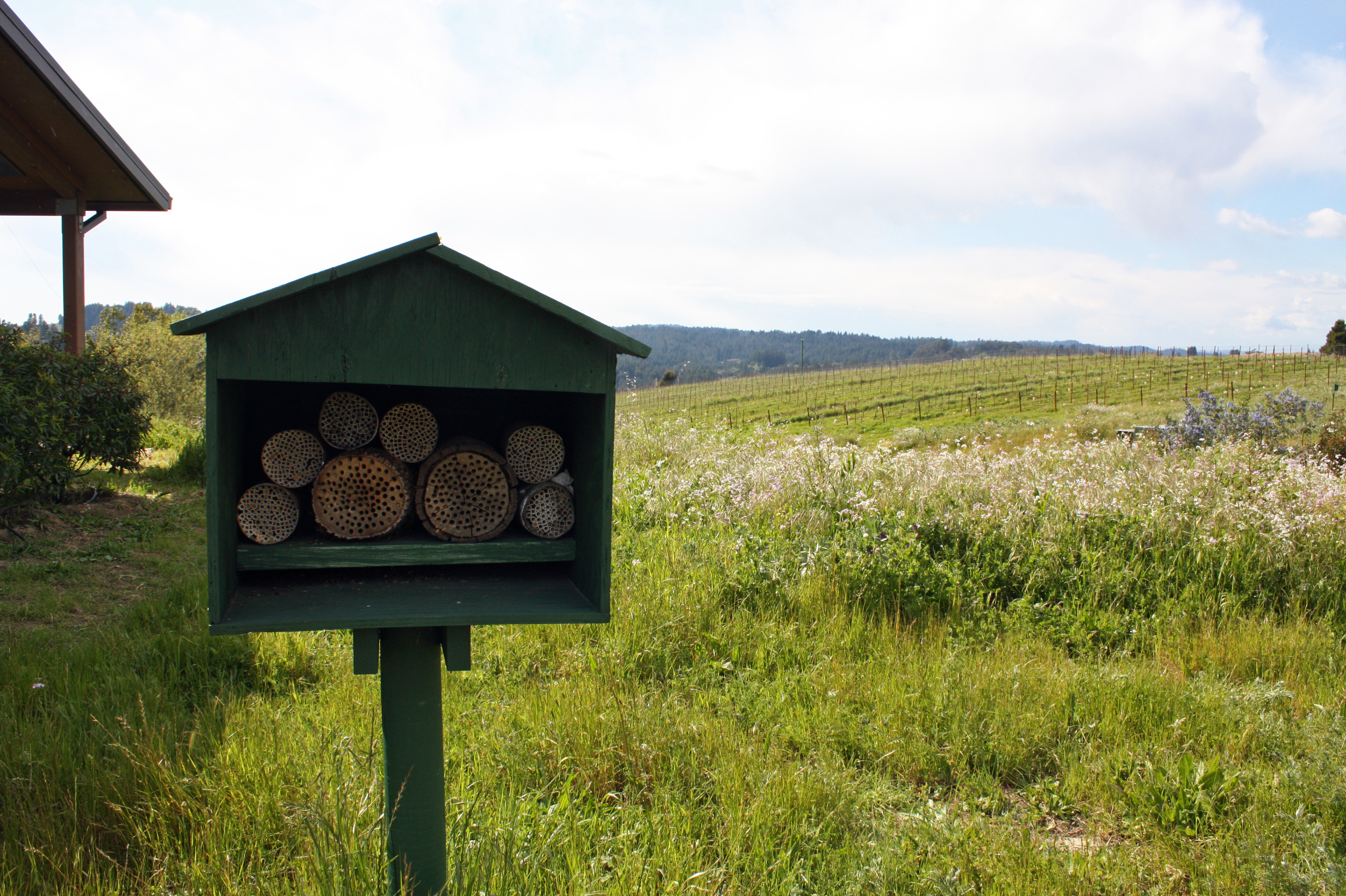
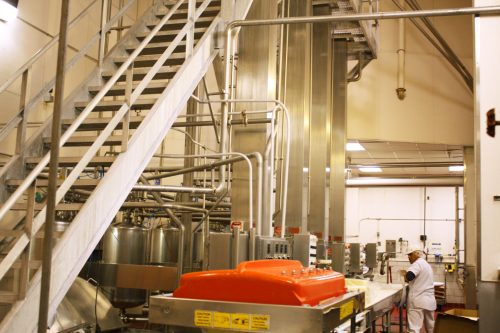
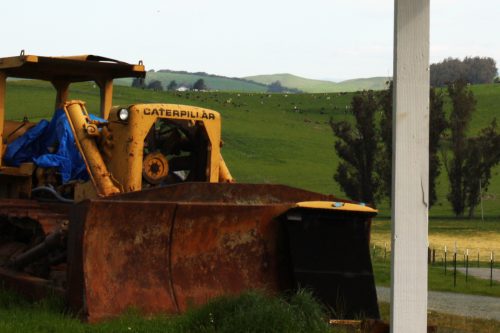
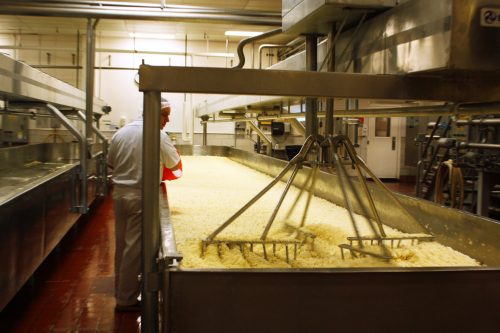
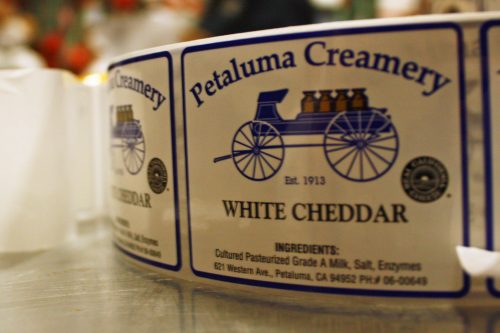
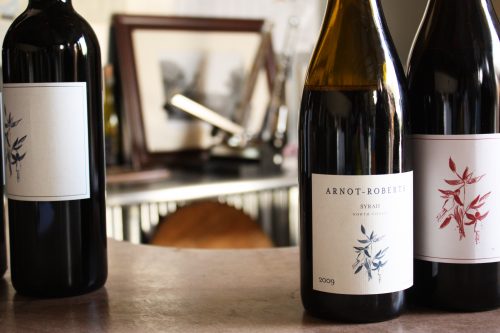
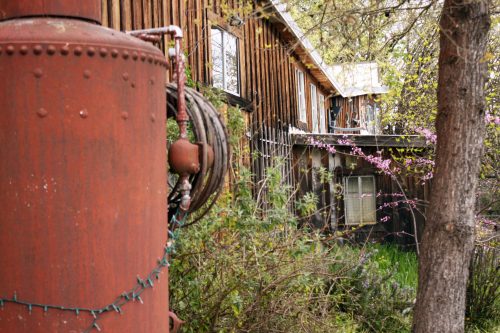
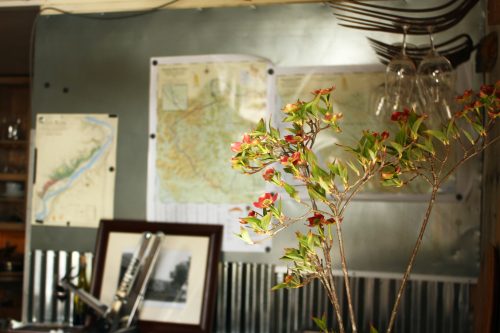
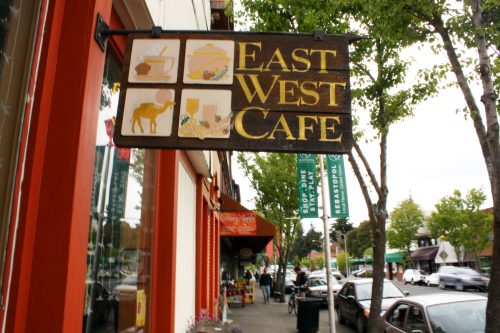
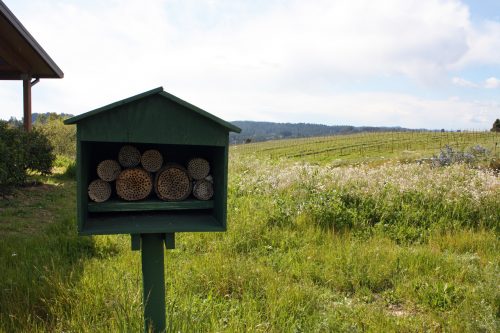
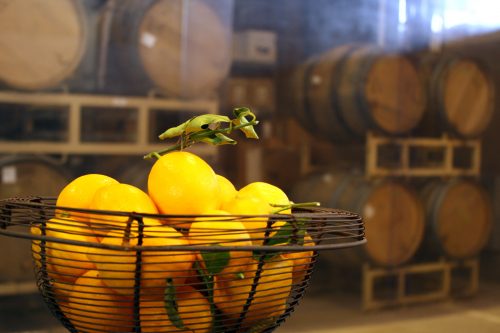
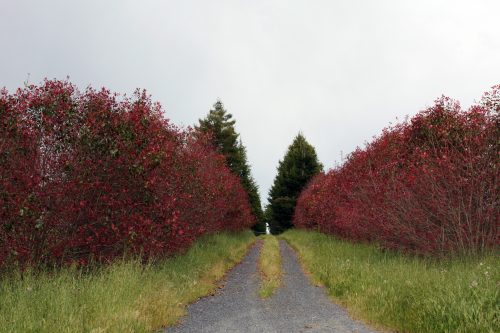
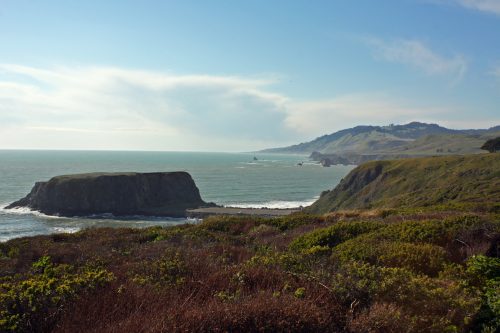
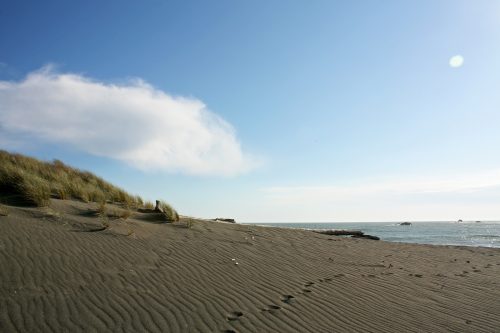


Christmas in San Francisco’s Nob Hill: The Cable Car Museum and Polk Street Holiday Shopping Extravaganza | Far Out City
[…] impressive wine selection. (It’s well curated, as the cool kids are saying these days.) They had our local Northern California favorites: an Arnot Roberts Trousseau ($30) and a Wind Gap Orro ($19.99). I got a little apprehensive as the […]
11/18/2011 at 12:39 pm